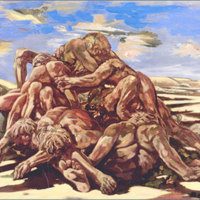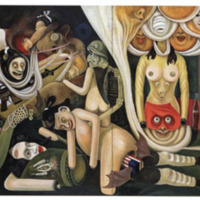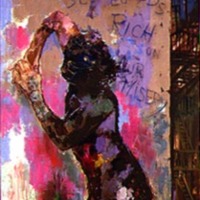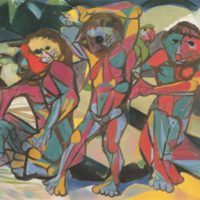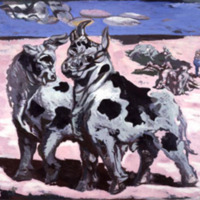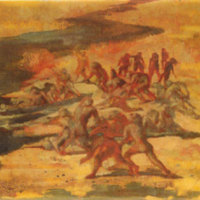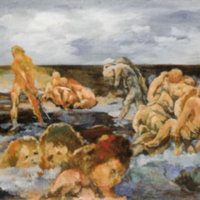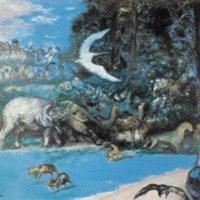Japanese Modernism Across Media
Wartime Surrealism
By the time of the Pacific war, Japanese surrealism consisted of a small but passionate group of artists in Tokyo, the most prominent of whom was Ichiro Fukuzawa. Coming from a wealthy family, Fukuzawa planned to study business, but ended up cutting classes to take sculpture classes at a different school. He made his change of career official when he went to Europe to study art, developing a specific interest in painting
Fukuzawa studied art in Paris for nearly a decade, right at the height of French avant garde. He took it upon himself to return to Japan and teach others the theories behind surrealism. Still a student himself, in a way, he took to changing and modifying his style very often, experimenting with different styles and subjects.
His prominence as a surrealist artist came at a price, however, as he was the prime target for the displeasure of the Japanese government. Fukuzawa was arrested in 1941 and detained for six months for his surrealist art, under the suspicion that surrealism was linked to communism. In addition, the individualist, subversive nature of surrealism was not ideal for the government's plans for Japanese civilians. The government wanted citizens' cooperation and national allegience, not the introspective and grotesque war scenes that Fukuzawa brought with him.
Upon his release from prison, Fukuzawa resumed his art career. Under threat of the government, he toned down the subversive nature of his art and resumed his painting with much more realistic subjects. By the 1960's, however, his art had resumed its honest and surreal feeling.
